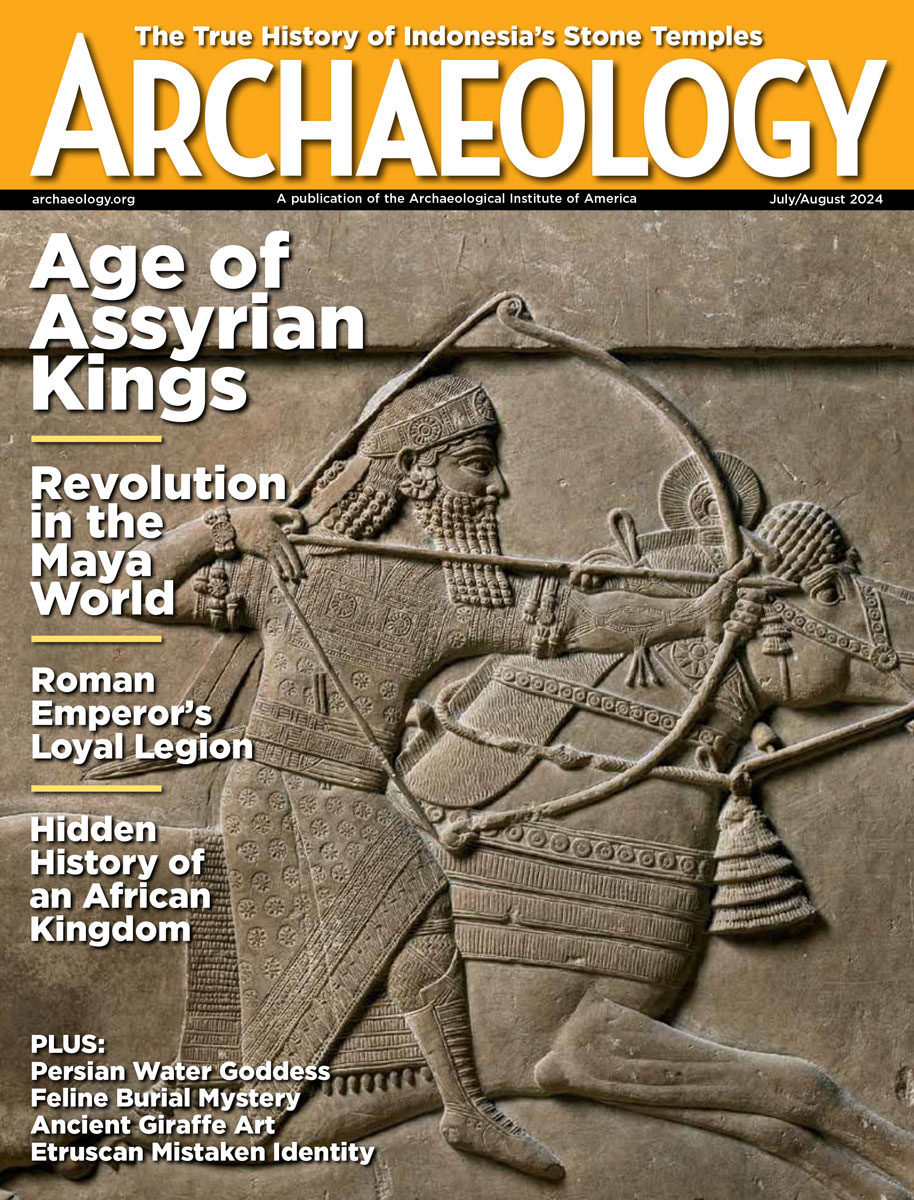Wednesday, May 16
May 16, 2012
A team of French archaeologists has unearthed an 11,000-year-old farming village on the island of Cyprus. The evidence, including bones and burned seeds, suggests that the Early Neolithic farmers came from the Middle East soon after the rise of agriculture, bringing plants, dogs, and cats with them. They supplemented their diets with wild boar that they hunted on the island. The excavation has also revealed a communal building made of mud brick that was surrounded by smaller houses, stone tools, shell jewelry, and green stone beads.
Reports from Iran tell of the excavation of an Achaemenid residential area in North Khorasan Province. The site, which flourished from the Iron Age until the Islamic era, occupies the Riba Mound and had been damaged by the construction of three brick kilns.
On the cliffs of Cambodia’s Cardamom Mountains, Nancy Beavan of the University of Otago is investigating the burials of an unnamed culture. The burials consist of log coffins and jars of human bones dating to between 1395 and 1650 A.D. that were left on dangerous ledges. She thinks the bones were placed on the ledges using systems of ropes and bamboo baskets after the bodies had been exposed and the bones de-fleshed.
Archaeology officials in Sri Lanka plan to strengthen security measures at archaeological sites; increase the penalties for those who damage, steal, or possess artifacts; and promote public awareness of the country’s archaeological treasures as part of archaeology week, which begins next month.
Four men were fined and sentenced to probation in Tennessee for violating the Archaeological Resource Protection Act. They had each taken artifacts from land belonging to the Tennessee Valley Authority. “TVA employs a team of investigators who aggressively pursue ARPA violations. We work to protect our region’s cultural history from thieves and others who want to profit from those resources,†said David Jolley, TVA vice president of Security and Emergency Management.
- Comments Off on Wednesday, May 16
Tuesday, May 15
May 15, 2012
Engravings at the French rock shelter site of Abri Castanet have been dated to 37,000 years ago, making them at least as old as the paintings of the Grotte Chauvet. The Abri Castanet engravings were carved in the limestone ceiling of the shelter, which was probably used by reindeer hunters. “But unlike the Chauvet paintings and engravings, which are deep underground and away from living areas, the engravings and paintings at Castanet are directly associated with everyday life, given their proximity to tools, fireplaces, bone and antler tool production, and ornament workshops,†explained Randall White of New York University.
Anthropologist Pat Shipman of Pen State University thinks that modern humans may have had an advantage over Neanderthals in Europe through the assistance of domesticated dogs. A 27,000-year-old dog burial has been unearthed in the Czech Republic, along with dog teeth that may have been worn as jewelry. Also, dogs are rarely depicted in cave art, suggesting that Paleolithic people viewed them as fellow hunters, rather than game animals. It has been shown that modern humans and dogs are able to communicate with eye contact. Shipman suggests that people may have evolved expressive eyes with highly visible sclera for silent communication while hunting in groups with dogs. “No genetic study has yet confirmed the prevalence or absence of white sclera in Paleolithic modern humans or in Neanderthals. But if the white sclera mutation occurred more often among the former – perhaps by chance – this feature could have enhanced human-dog communication and promoted domestication,†she said.
Using a new dating technique, Alasdair Whittle of Cardiff University and Alex Bayliss of English Heritage are building an accurate chronology of the rise of farming culture in Britain 6,000 years ago. Neolithic farmers brought a social and political revolution marked by feasting on cattle and large hilltop earthworks. “We thought these processes took hundreds of years. In fact, they took about a tenth of that,†said Bayliss.
The U.S. Supreme Court has declined to hear the appeal of Odyssey Marine Exploration Inc. of Tampa, Florida. A federal judge in Tampa, and the 11th Circuit Court of Appeals in Atlanta, ordered the salvage company to hand over $500 million in silver and gold coins recovered from international waters to Spain. The courts ruled that the coins came from a Spanish warship that sank in 1804, and have remained the property of Spain.
- Comments Off on Tuesday, May 15









